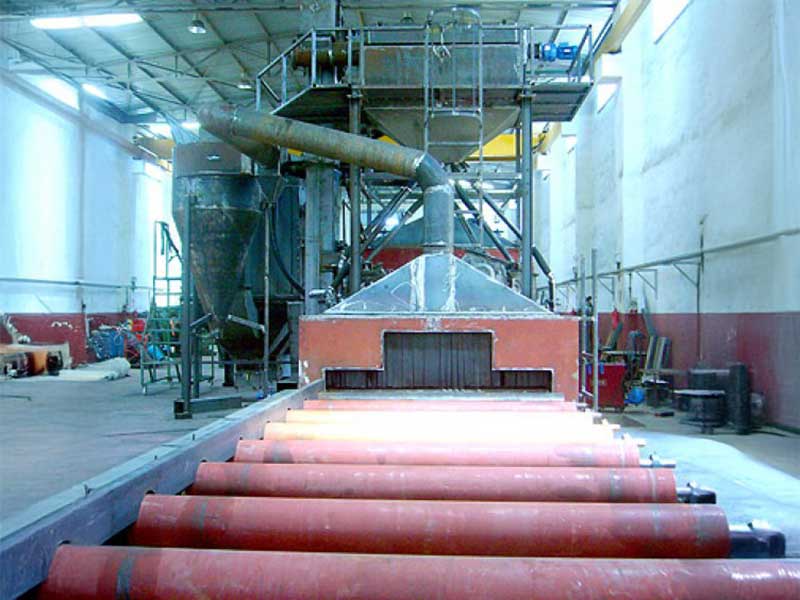
Pipe sandblasting is a critical surface treatment method used for cleaning, roughening, or preparing the inner and outer surfaces of industrial pipes. This process is carried out for various purposes, such as extending the life of pipes, preventing corrosion, surface preparation before coating or painting, and providing surface cleaning before welding.
Main Objectives of Pipe Sandblasting Process:
- Corrosion Prevention:
- Removing rust, oxides, and other contaminants from the pipe surface helps prevent corrosion.
- Surface Preparation:
- Roughening the pipe surface before painting, coating or other surface treatments allows for better adhesion of these processes.
- Cleaning Before Welding:
- Cleaning the ends of the pipes to be welded provides more robust and quality welds.
- Life Extension:
- Cleaning damaged or weak layers on the pipe surface prolongs the life of the pipes.
Pipe Sandblasting Machines:
Pipe sandblasting machines are special equipment that provide effective sandblasting of the inner and outer surfaces of pipes. These machines are designed in different types according to the size, shape and sandblasting requirements of the pipes.
Types of Pipe Sandblasting Machine:
- Inner Pipe Sandblasting Machines:
- These machines are designed for sandblasting the inner surfaces of pipes. Using special nozzles or turbines, they spray abrasive material into the pipe.
- Outer Pipe Sandblasting Machines:
- These machines are designed for sandblasting the outer surfaces of pipes. They usually clean the pipe outer surface with abrasive material using conveyor systems and rotary turbines.
- Both Inner and Outer Pipe Sandblasting Machines:
- These machines provide sandblasting of both internal and external surfaces at the same time. This improves production efficiency.
- Spiral Pipe Sandblasting Machines:
- These machines are specially designed for sandblasting the inner and outer surfaces of spiral welded pipes.
Steps of Pipe Sandblasting Process:
- Pipe Loading:
- The pipes are loaded into the sandblasting machine.
- Blasting:
- The abrasive material is sprayed on the pipe surface at high speed.
- Abrasive Recovery:
- The abrasive material used is collected and cleaned by recovery systems.
- Dust Collection:
- The dust generated during sandblasting is filtered by dust collection systems.
- Pipe Discharging:
- The sandblasted pipes are discharged from the machine.
Abrasive Materials Used:
The abrasive materials used in the pipe blasting process vary depending on the type of pipe surface and the desired results. The most commonly used abrasive materials are:
- Steel granule
- Steel ball
- Sand
- Ceramic balls
Advantages of Pipe Sandblasting Process:
- High efficiency
- Consistent surface finish
- Corrosion resistance
- Long-life pipes
- It removes roughness on the surface.
- Provides cleaning before welding.
Application Areas of Pipe Sandblasting Process:
- Oil and gas industry
- Water and wastewater industry
- Construction industry
- Shipbuilding
- Automotive industry




